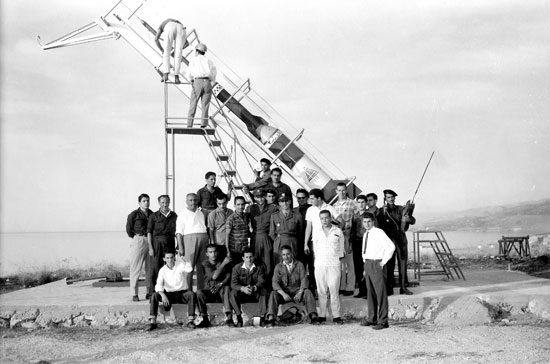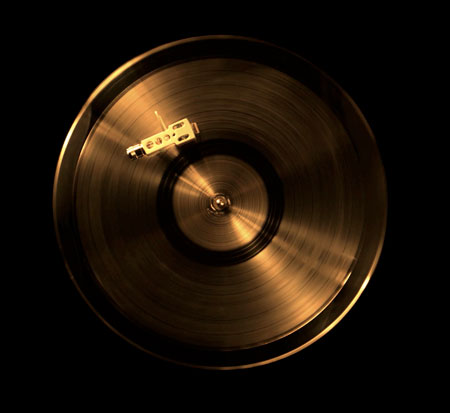For T.A.
There's that river in my mind, the one that had been an ocean once, to which I had been, or had wanted to be. I hear it whistle to me in the soft pulsations of an air so thick that it almost yellowed. And I saw the ocean morning, it was 4 AM in Manama, and never had one felt so free in the whole of his life, never had one felt so close. The waters did not move, and I speculated for an entire night and an entire morning, after the sun found me, half undressed, wanting to have everything... Believing that I already had had everything. There was always going to be more, and we were going to laugh, in such a way that only the eyelids can laugh, forcing the corners of the mouth into a steep plateau and then descending, looking away, trying to find themselves in the intoxication of the miracle; this miracle out of which survival is possible only in duos. And maybe I had been insane, that I know not, not now when the air has become so thick as to single out the island from the rest of the known universe. I looked for other planets, planets that could sustain life, places where I would find shelter, galaxies with more hope, brighter stars.
There was that one morning in Istanbul when I set on the journey, of the search, of the path. What a puzzling day it was, so incredibly prosperous the air, and for the first time since the winter I could see ships crossing the waters, going to foreign countries. And all my countries are foreign, all my ports of call are temporary. I stood in the balcony, feeling that I was about to fall, from exhaustion, from guilt, from lack of memories. I had nothing that I could call mine, no land, no scar, no memory even. Everything was but a vague trace. That's when I began to look for those planets with Emre, the planets that would walk out of his formless sculptures. The first thing that I wondered about was whether there were oceans in those planets. I thought for a moment that I had missed the appointment, because of my tendency of being always late, of being always delayed, prey of a Saturnine revolution. Or maybe it was that I was being awaited in one of those planets, because they had oceans. I imagined them to be beautiful, beautiful water underworlds, private hells.
Emre reminded me of all that... I didn't want to go anywhere, I didn't even want to move. This wasn't even about geography. Life is the same in all the places, a constant justification, a permanent dislocation, the knowledge that you could be free elsewhere, that there were other places, that this didn't have to be this way, that nothing really had to happen. Why would you fly for three days to reach the future far away? Everything now is a solid extension of the present, which in every moment of the day continues to alter the past. Traveling there was such an illusion after all... "Welcome home", that was one of the final sentences. There was nowhere else to go after that, how could I? I didn't want that finality, this sense of arrival, like an anchored ship. I wanted to travel everywhere, taking this whole island with me. Its pink mornings, the shade of the palm grooves, the asphalted mutilations, the warmest air, the permanent sense of being lost, and that, that small hand. I wanted to place it atop my palm, to make sure that I could enclose it, protect it.
"Because we aren't going anywhere". And that I had known too, the finaly had reached me the moment I took off on my first plane, I had had then everything that could be. And what a priceless moment I was in. I had admired their paintings with the humility of someone who had never really seen, of someone who was discovering the world for the first time, discovering all what could be had. It was a little palace, and the cushions engulfed me sweetly, amidst the smiles, after a long afternoon with Jamal, and the most exquisite elixir that I had known to exist, overlooking the abetted ruins in Saar. And she knew how to smile too, when she placed that one painting atop the table. No, it wasn't a top the table, but hanging from a wall, near the entrance. "The Land of Peace". The tiny houses as if looked at from above. That painting was like a message in a bottle... I didn't forgot the colors. I remembered everything in Adliya, a few days later, trapped between the smile of Jehan and the obsession of leaving something there, something behind, a real trace.
That was my only possibility. No painting or writing ideas, only questions. Surah al-Fatiha, I learnt later from Jamal, in a letter. The poet must die, so that some of us learn to love life more, I heard once. There was instinctive writing on the painting: "His being consumed my existence completely. Now I can work again". Rima said that I still knew the colors, that I still remembered the colors. But in the end she never came, she never came to Istanbul, just like Abdulrahman didn't either. And I did remember the colors, they were an earthy palette, with doors and tapestries, chalk walls, the purple in the garden, Sami's smile, and that watermelon drink in Seef. The green gate at Faika's home and the delicate ochre of the carpets in her father-in-law's home. That painting is the only thing that was really left, from my stellar journey. The one only thing I will claim for myself, should I ever see Adliya again. And that conversation still missing with Haya. The past would change, the origin would change, the destination too. Only the present was to remain broken.
And to think it was only six months ago, that hurricane in New York. The things I thought then, the things I felt, they all burnt together with the bridges, together with the gaps; they burnt in a single fire, and their extinction was immediate. There were no funerary rites, no mourners, no announcements, no candles, not even ashes. It was all of a sudden a white room, and I disappeared in it too, without as much as knowing. The only fear was that I could never again write. This is not your day, this is not your day, this is not your day, death told me as I crossed through the small village around Juffair under the inclement sun. One wrong turn and everything changed... Crossing into Muharraq and then finally reaching Salmaniya in the end, without much as knowing what I was doing. It was a strong metaphor for my journey... One little wrong turn, and everything faded from view. An insignificant turn, and I no longer saw the Gulf Hotel. But I didn't want to see it. Else I wouldn't stop staring, looking at words in the air, so broken, so fooled, so misunderstood.
The only true fear: That writing would never come again, that it had stayed in that room, overlooking a supermarket. The struggle to define yourself, to become something else, to never be the same, to leave behind. How to leave without ever having truly been? Suspended in a present that is not yours, and that you didn't choose, with the obligation to weigh on, to participate, to appear. To think that you had always thought this way, that you had always been this important person. But you're still suspended, living from the little hours, without knowing if a future will come, without knowing if this future will be backed by a past. Maybe it was just the illusion of posession, maybe it was simply a dream, a nightmare that contained tiny beautiful dreams wrapped in an even bigger nightmare. And you will never know. They will never know. The letters that will never again be read... Only your skin knows. You wouldn't even know if other skins know. What does it mean to be there? What does the distance mean? What does it mean to lose everything?
But I wasn't afraid. I was never afraid. Or I was afraid, yes, but I wasn't afraid of that. So many times you called that name, in the dark, when you couldn't sleep. And you wonder if unknown names slept well that night. Once you saw them in a dream, in which they were angry and burnt, burnt with open wounds, with scars, burnt with coals, with bullets, also burnt with memories. I never wondered, I never faltered, even when I wanted to. Every moment was a constellation of its own, every day was true, and truer than the one before. Every morning was delightful, and the conquest of a heaven that spaces wouldn't know of. And Katherina said, I would like to give myself away, to give myself as a person, as a present to somebody else. I didn't falter at the vertigo, at the nausea, the free fall, the jump. Impossible as it might have been. Impossible as I knew it to be. And I kept nothing, with the exception of a voice note, and a stack of printed conversations that one day I will toss into the sea, right there, where it all started, at the ocean, at the fort, in the island.
I did forget my language, my aesthetics, my poetics. But they were all useless. There's no aesthetics of life, there's no aesthetics of art. Aesthetics is a contemplative point of view, and that Katherina and I agreed on after six or seven years of wandering across different but parallel lines in the horizon. And I haven't found a new language, because art is also silence, art is also restlessness, art is also the void. Embracing the void. And perhaps I would have never seen her again hadn't I come to Istanbul. Perhaps I would have never seen art face to face, this scary moment, this paralyzing moment... Hamed, Hale, Mari. But I'm still waiting, we're all waiting after all. We don't know what we're doing here, there's no peace of mind, there's no consolation. There're only fulgurations, detours, delays, and why not say it, accidents that become miracles that later become accidents again. There's Rana after all... The knowledge that you're awaited somewhere. And there's no mercy down here either, there's only dialectical damage. We're all at risk.
We're all in the crossing, at this liminal border. One can never miss what he never had. But the craving is constant, the desire of gain, the fear of loss, the pleasure of the in-between. You couldn't have known. And you couldn't be a mortal if you had. And you should never forget... Never. It is a fallacy to live with memories but without the past, because it is being firmly anchored in the present what gives you permission to alter the past as the present unfolds into your hands, and you have sole ownership. It's your duty, to remain in exile, to remain foreign, to remain unrecognizable, and therefore human, open to the turbulence. My cities of life, my cities of death. Beirut, Manama, Istanbul. In that order. Remain in exile, even within the confine of your own home. Refuse being encircled, refuse being defined, refuse the end of becoming, the finality. Never pack, never leave, never stay. Keep circulating, making part of the absence, withdrawing into a solid fullness, composed of interminable journeys.
That moment... Seeing art in the face, right in the face, for the first time...









